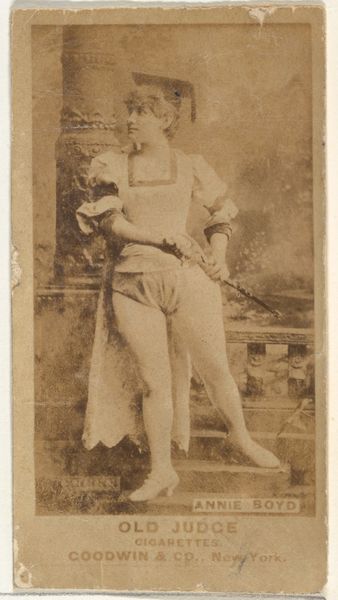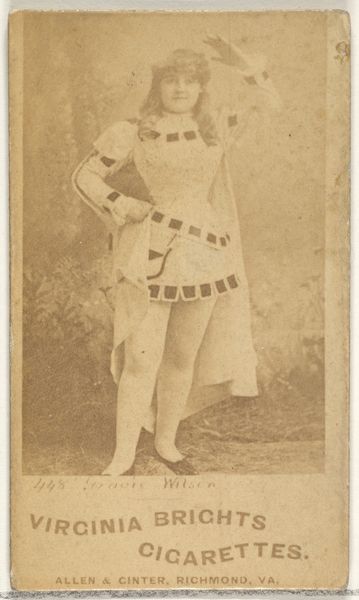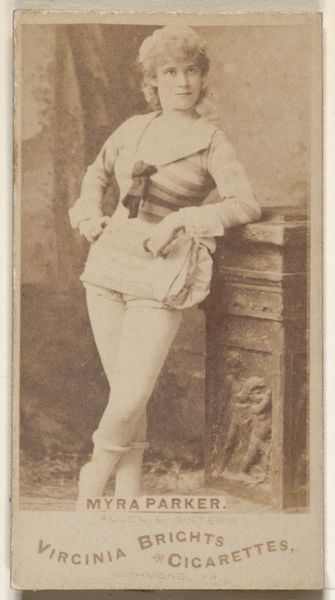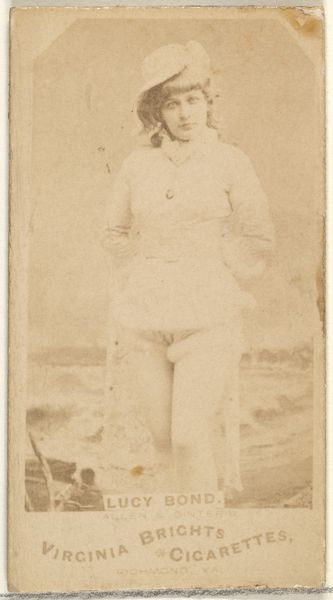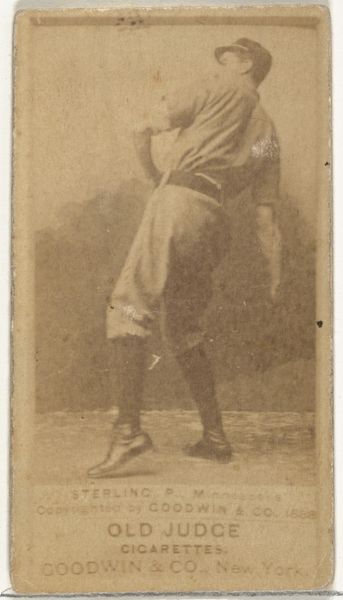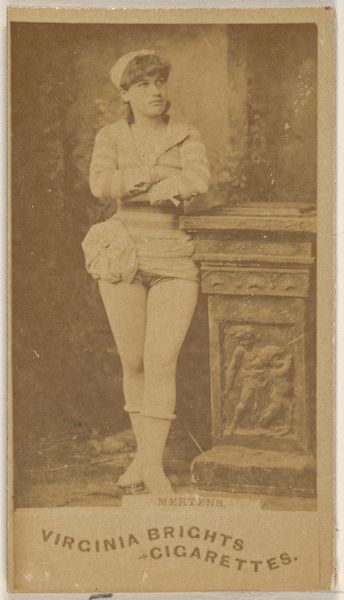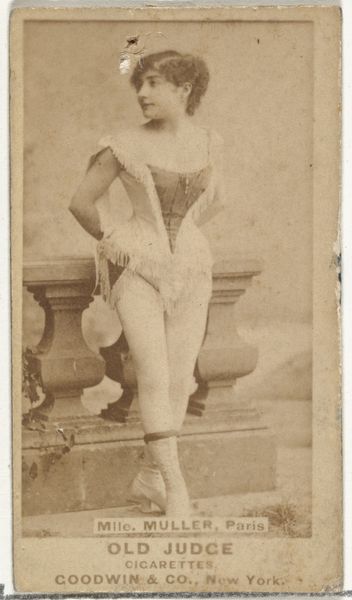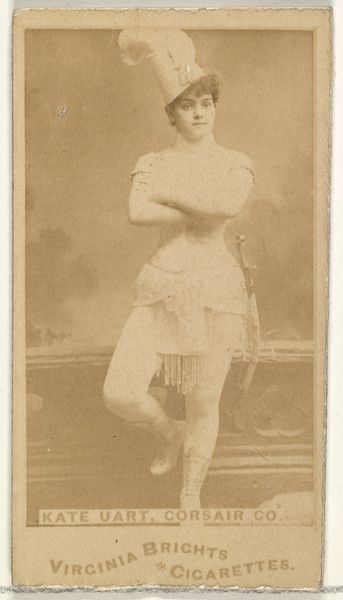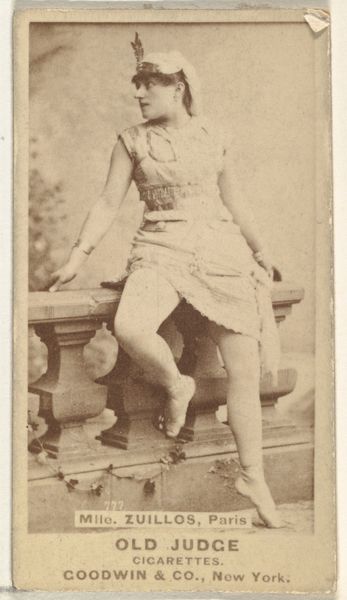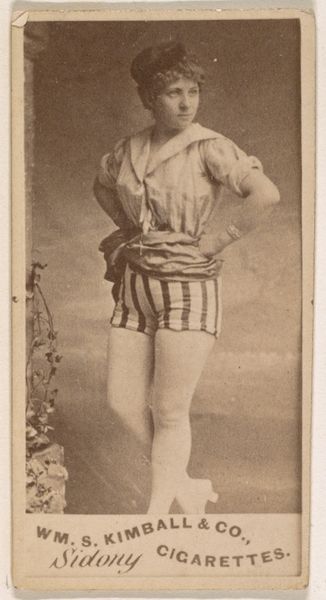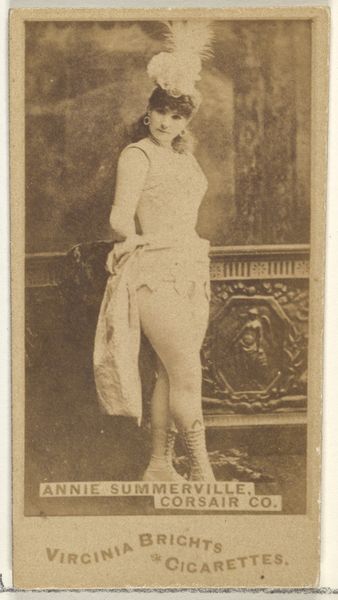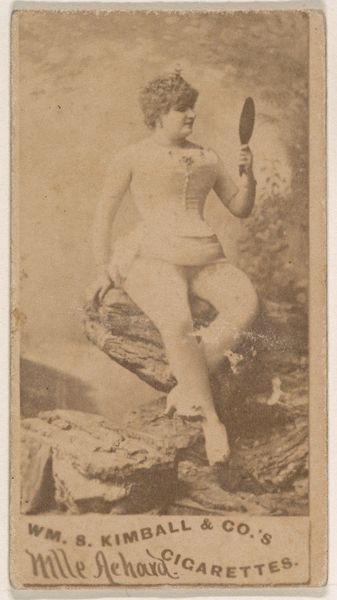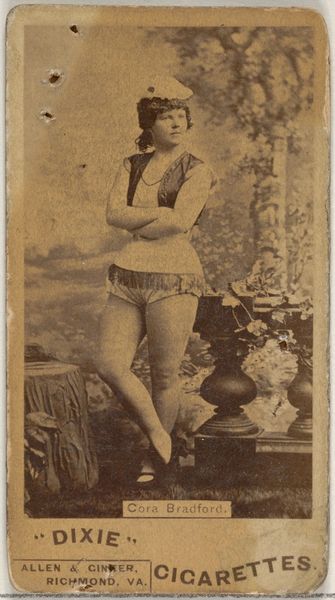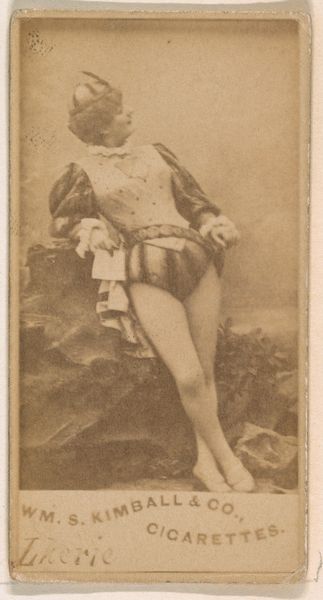
Annie Boyd, from the Actors and Actresses series (N145-7) issued by Duke Sons & Co. to promote Duke Cigarettes 1880s
0:00
0:00
print, photography
#
portrait
# print
#
photography
Dimensions: Sheet: 2 11/16 × 1 3/8 in. (6.8 × 3.5 cm)
Copyright: Public Domain
Curator: So, let's discuss this... fascinating little card. It's from the 1880s, part of the "Actors and Actresses" series (N145-7) issued by W. Duke, Sons & Co. to promote their Duke Cigarettes. A tobacco advertising card, essentially, found its way into The Met's collection. Editor: First impression? It's sepia-toned melancholy distilled. Like a fading memory struggling to hold its form, captured in a space where dance flirts with faded desire and decay. There’s something vaguely theatrical about it. Curator: Absolutely, the theatrical link is spot on! These cards were immensely popular. They were inserted into cigarette packs as a way to entice customers. Images of famous actors and actresses, like Annie Boyd, offered a little glamor alongside your nicotine fix. It reveals the cultural landscape and celebrity endorsement emerging at the time. Editor: And Boyd herself… is there a hint of knowing playfulness there? The stance is just a little too self-conscious and controlled. Maybe she had just nailed a tough bit and the director said “Hold it!" I would guess that is either a stage set or it was constructed for photographic portraits of actors like herself. Curator: Very possibly. Also note how meticulously it aligns with then-dominant standards of feminine beauty. Although presented as a naturalistic snapshot, photography even here is shaped by institutional norms regarding female performance and representation. It's a portrait but also a commodity, existing in a very public context. Editor: True! There is no authenticity without artifice, I suppose! A staged portrait mass-produced to sell fags. Which feels very postmodern. I also wonder how Annie Boyd herself viewed this... artifact now preserved in museum? A giggle, or a shrug, perhaps? Did these glimpses into fleeting celebrity help, hurt, or shift anyone’s perception? Or am I giving Duke Cigarettes too much credit for that time period? Curator: Hard to say for sure what Boyd or viewers at the time thought, but regardless, it offers insights into the visual culture and marketing strategies during that period. A disposable trinket that reflected—and helped shape—ideas about celebrity and success. Editor: Hmm, yes… that shift to "disposable trinket" adds another somber layer. Almost a haiku on the transience of fame… I like that way of reflecting back on it all as something of a harbinger. Curator: Right, but don't let the aesthetic allure distract from the capitalist machine churning beneath its surface. Thanks to Duke, this object lives on for continued observation. Editor: A great cautionary and celebrational object, yes. And it reminds us that context gives all, if you really want to see.
Comments
No comments
Be the first to comment and join the conversation on the ultimate creative platform.
